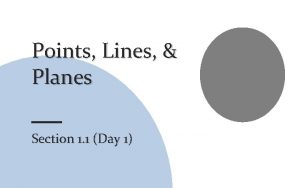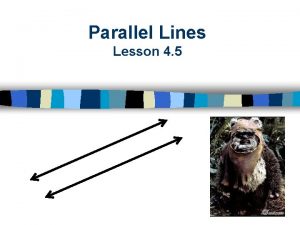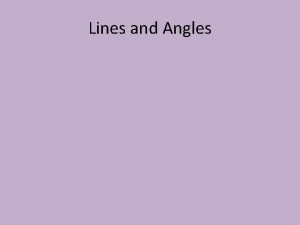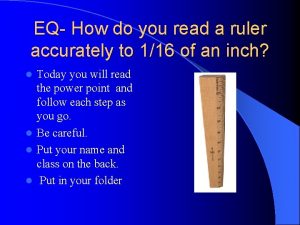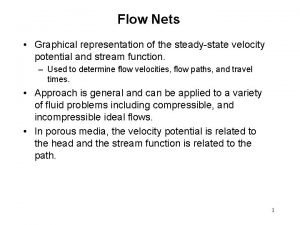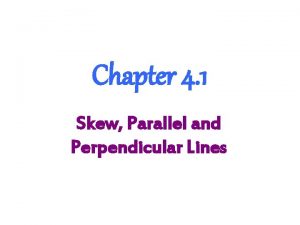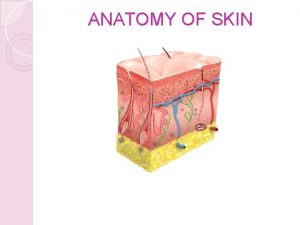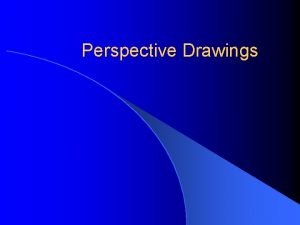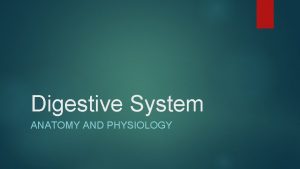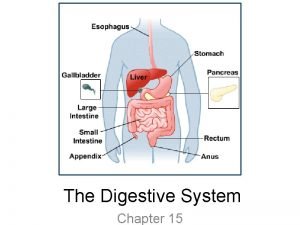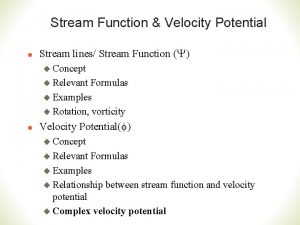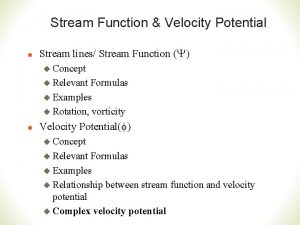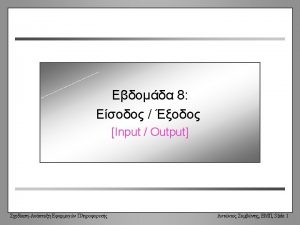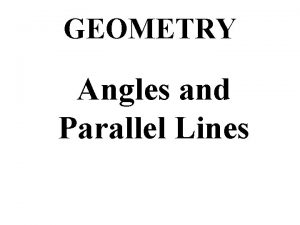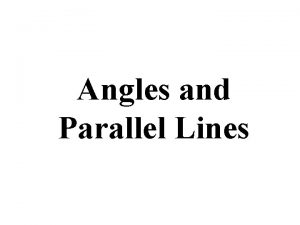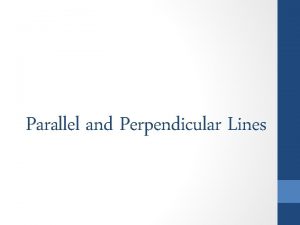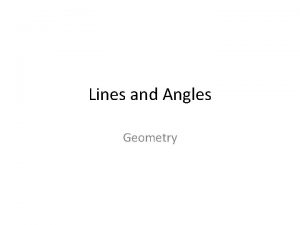STREAM FUNCTION AND STREAM LINES A Small Presentation














- Slides: 14

STREAM FUNCTION AND STREAM LINES A Small Presentation

Definition The stream function is defined for incompressible (divergence-free) flows in two dimensions – as well as in three dimensions with axisymmetry. The flow velocity components can be expressed as the derivatives of the scalar stream function. The stream function can be used to plot streamlines, which represent the trajectories of particles in a steady flow. The two-dimensional Lagrange stream function was introduced by Joseph Louis Lagrange in 1781. The Stokes stream function is for axisymmetrical three-dimensional flow, and is named after George Gabriel Stokes.

Relation between Stream Function and Volumetric Flow Considering the particular case of fluid dynamics, the difference between the stream function values at any two points gives the volumetric flow rate (or volumetric flux) through a line connecting the two points

Which Dimension is Best? Since streamlines are tangent to the flow velocity vector of the flow, the value of the stream function must be constant along a streamline. The usefulness of the stream function lies in the fact that the flow velocity components in the x- and y- directions at a given point are given by the partial derivatives of the stream function at that point. A stream function may be defined for any flow of dimensions greater than or equal to two, however the two-dimensional case is generally the easiest to visualize and derive

For 2 D-Flow For two-dimensional potential flow, streamlines are perpendicular to equipotential lines. Taken together with the velocity potential, the stream function may be used to derive a complex potential. In other words, the stream function accounts for the solenoidal part of a twodimensional Helmholtz decomposition, while the velocity potential accounts for the irrotational part.

Properties of Stream Function 1) The stream function is constant on any streamline. 2) For a continuous flow (no sources or sinks), the volume flow rate across any closed path is equal to zero. 3) For two incompressible flow patterns, the algebraic sum of the stream functions is equal to another stream function obtained if the two flow patterns are super-imposed. 4) The rate of change of stream function with distance is directly proportional to the velocity component perpendicular to the direction of change.

Stream Function

Stream Function-Video

Stream Lines Streamlines, streaklines and pathlines are field lines in a fluid flow. They differ only when the flow changes with time, that is, when the flow is not steady. Considering a velocity vector field in threedimensional space in the framework of continuum mechanics

Stream Lines Streamlines are a family of curves that are instantaneously tangent to the velocity vector of the flow. These show the direction in which a massless fluid element will travel at any point in time.

Definition Different streamlines at the same instant in a flow do not intersect, because a fluid particle cannot have two different velocities at the same point. Similarly, streaklines cannot intersect themselves or other streaklines, because two particles cannot be present at the same location at the same instant of time; unless the origin point of one of the streaklines also belongs to the streakline of the other origin point. However, pathlines are allowed to intersect themselves or other pathlines (except the starting and end points of the different pathlines, which need to be distinct).

Applications Engineers often use dyes in water or smoke in air in order to see streaklines, from which pathlines can be calculated. Streaklines are identical to streamlines for steady flow. Further, dye can be used to create timelines. The patterns guide their design modifications, aiming to reduce the drag. This task is known as streamlining, and the resulting design is referred to as being streamlined. Streamlined objects and organisms, like steam locomotives, streamliners, cars and dolphins are often aesthetically pleasing to the eye. The Streamline Moderne style, an 1930 s and 1940 s offshoot of Art Deco, brought flowing lines to architecture and design of the era. The canonical example of a streamlined shape is a chicken egg with the blunt end facing forwards. This shows clearly that the curvature of the front surface can be much steeper than the back of the object. Most drag is caused by eddies in the fluid behind the moving object, and the objective should be to allow the fluid to slow down after passing around the object, and regain pressure, without forming eddies.

Stream line-Video

Thank You
 Differentiate byte stream and character stream
Differentiate byte stream and character stream 1-1 points lines and planes worksheet
1-1 points lines and planes worksheet Parallel planes geometry
Parallel planes geometry Line conventions in engineering drawing
Line conventions in engineering drawing Define parallel lines and intersecting lines
Define parallel lines and intersecting lines Mentovertical diameter
Mentovertical diameter Vertex presentation and cephalic presentation
Vertex presentation and cephalic presentation 2 3/16 on a ruler
2 3/16 on a ruler Stream function formula
Stream function formula Skew lines
Skew lines Kraissl lines vs langer lines
Kraissl lines vs langer lines Horizontal line art definition
Horizontal line art definition Function of digestive system
Function of digestive system Bicuspids
Bicuspids Frog parts and functions
Frog parts and functions

